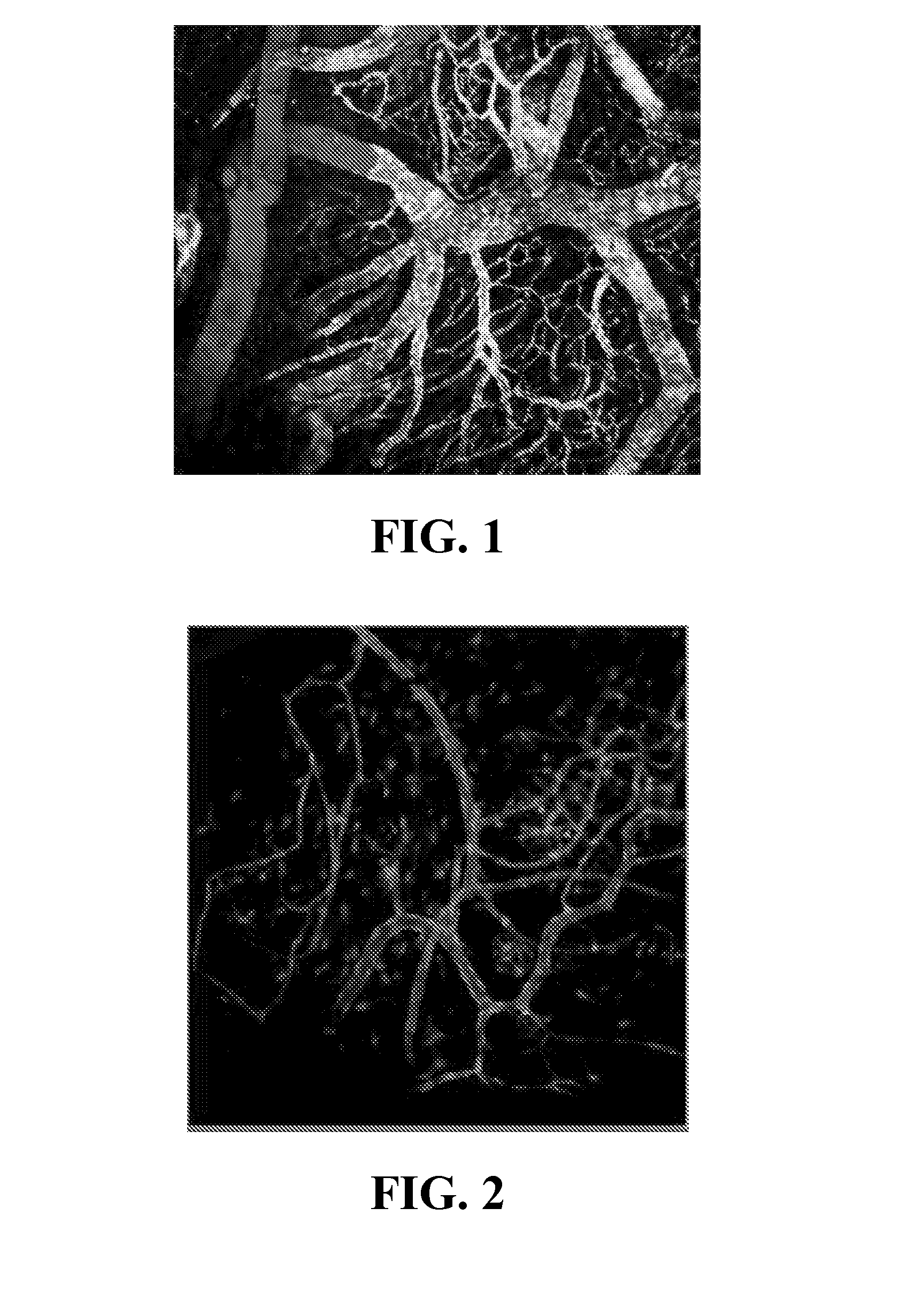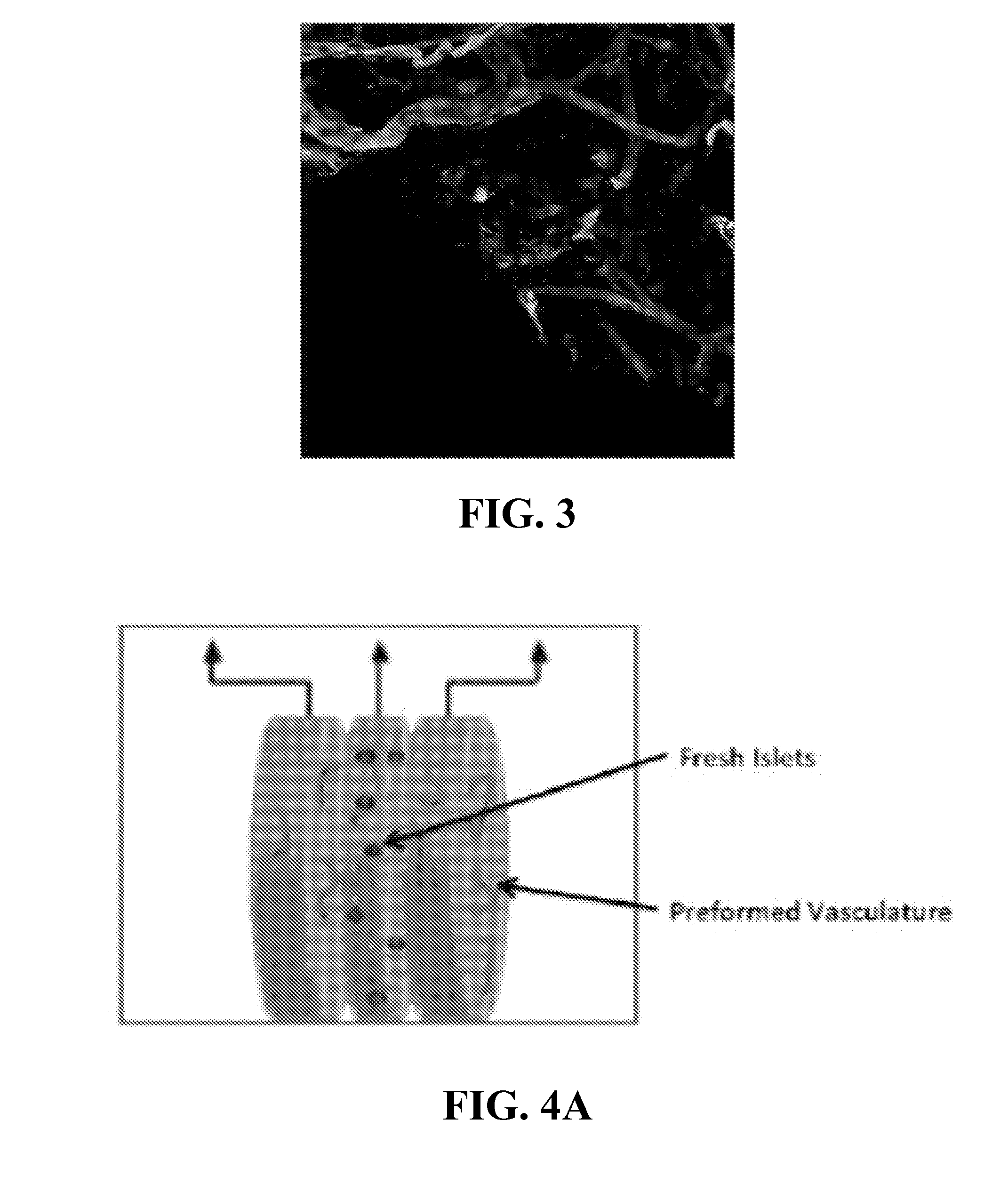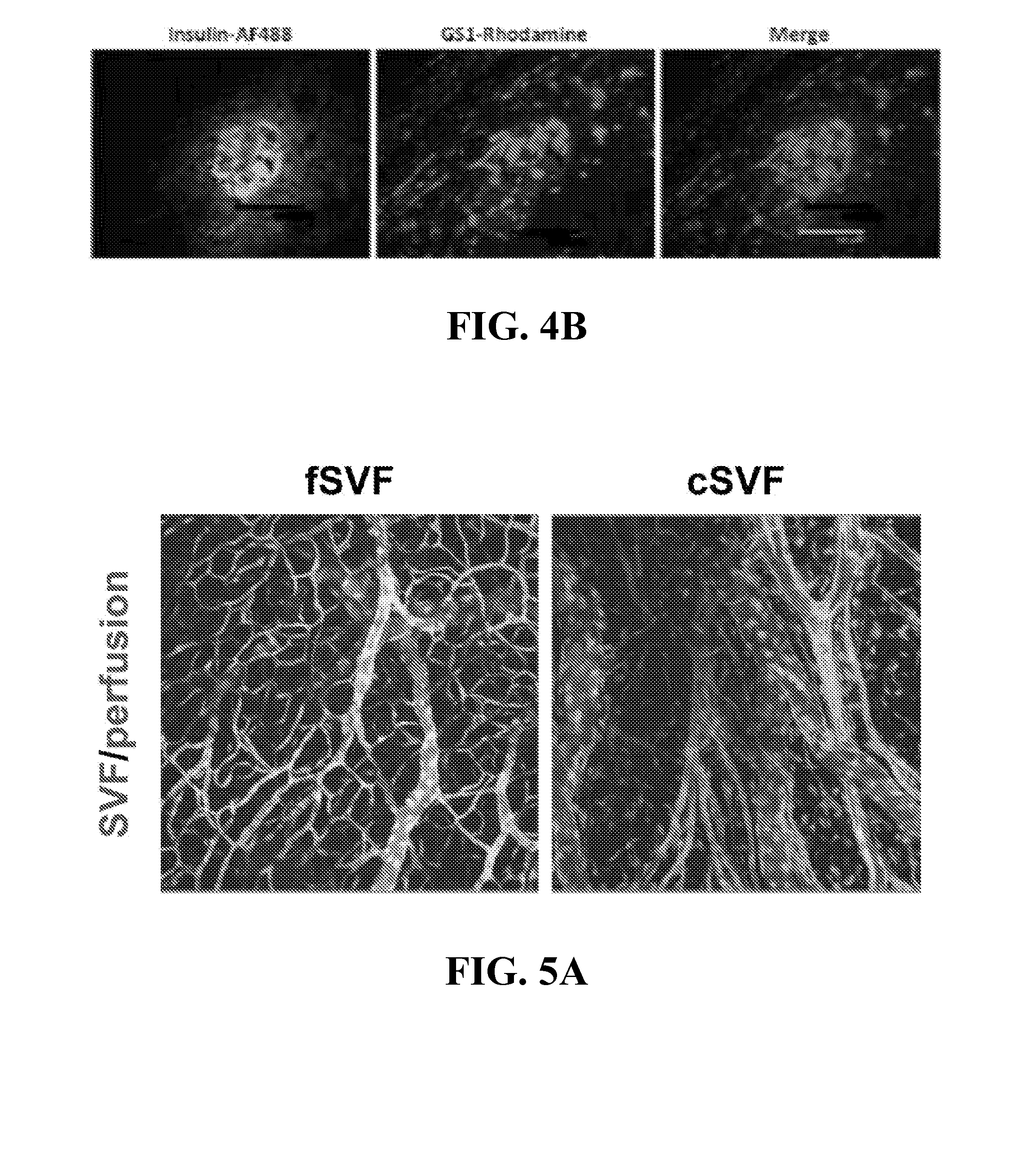Cell systems and methods for delivering disease-specific therapies
a cell system and disease technology, applied in the field of cell systems and methods of using the cell system to deliver disease-specific therapies, can solve the problems of refractory to treatment, unable to treat or protect the most difficult types of diseases, and the development of premature cardiovascular disease, etc., to achieve the effect of increasing the therapeutic effect of the cell system and being able to inocula
- Summary
- Abstract
- Description
- Claims
- Application Information
AI Technical Summary
Benefits of technology
Problems solved by technology
Method used
Image
Examples
example 1
netically Autologous Stromal Vascular Fraction Cells to Form a Functional Vasculature in a Disease Model
[0064]The development of an engineered organoid or cell system not only requires a therapeutic parenchymal cell, but also a functional vasculature that can interact with the host and not induce an immune response. Adipose tissue is highly vascularized and can be digested to separate the adipose cells from the remaining stroma, which is also referred to as the stromal vascular fraction (SVF). When SVF cells are added to a three-dimensional collagen I construct and implanted subcutaneously, the SVF cells self-assemble into a functionally mature vasculature (see, e.g., FIG. 1). As such, it was thought that SVF cells are a microvascular regenerative system and can be used as an autologous source for vascularizing organoids, and experiments were undertaken to test if SVF cells could be used to generate a vasculature in a genetic disease model, specifically the low-density lipoprotein r...
example 2
nt of Engineered Implantable Vascularized Cell-Based LDL Apheresis System Using Hepatocytes
[0067]Familial hypercholesterolemia is characterized by pathologically elevated LDL-cholesterol due to LDL-receptor (LDLR) gene defects. In this regard, it was thought that an implantable cell-based apheresis system can scavenge excessive LDL cholesterol, and experiments were undertaken to design a strategy that combines adipose stromal vascular fraction cells (SVF) for stromal and vascular support with hepatocyte model cells (HepG2) for LDL clearance. To begin the development of such a strategy, LDLR induction in HepG2 was first assessed by serum starving the cells for 48 h, followed by exposure to 1, 0.2, 2, or 20 μM of Lovastatin. Maximal LDLR expression was observed with the 20 μM treatment. HepG2-coated Cytodex-3 beads were then placed within 3 mg / mL collagen constructs containing SVF cells, which was expected to sustain HepG2 cells and form robust host-construct vascular associates. Cons...
example 3
n of a Functional Liver Tissue Mimic Using Adipose Stromal Vascular Fraction Cell-Derived Vasculatures
[0070]To harness the vascularization potential of SVF cells in vivo and to generate an effective vascular interface between host and transplanted liver cells that resulted in a functional tissue mimic, experiments were undertaken to determine: (1) whether adipose-derived SVF cells have a potent intrinsic vascularizing potential; (2) whether culturing freshly isolated SVF cells retained that vascularization potential despite possible changes in cell populations; and (3) whether SVF cell-derived vasculatures formed a functional interface between host and implanted parenchymal cells.
[0071]Materials and Methods
[0072]For SVF isolation, adipose-derived SVF cells were isolated from the epididymal fat pads of male, retired breeder Sprague-Dawley rats (Charles River) under anesthesia [ketamine (40-80 mg / kg) and xylazine (5-10 mg / kg)]. Green fluorescent protein (GFP)-tagged SVF were obtained ...
PUM
| Property | Measurement | Unit |
|---|---|---|
| time | aaaaa | aaaaa |
| concentration | aaaaa | aaaaa |
| volume | aaaaa | aaaaa |
Abstract
Description
Claims
Application Information
 Login to View More
Login to View More - R&D
- Intellectual Property
- Life Sciences
- Materials
- Tech Scout
- Unparalleled Data Quality
- Higher Quality Content
- 60% Fewer Hallucinations
Browse by: Latest US Patents, China's latest patents, Technical Efficacy Thesaurus, Application Domain, Technology Topic, Popular Technical Reports.
© 2025 PatSnap. All rights reserved.Legal|Privacy policy|Modern Slavery Act Transparency Statement|Sitemap|About US| Contact US: help@patsnap.com



